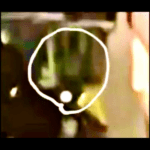
Galileo Project публикует первые рецензируемые научные статьи в JAI
Похожие записи:
 Пожалуйста, посмотрите, прежде чем говорить, что там ничего нет.
Пожалуйста, посмотрите, прежде чем говорить, что там ничего нет.
 Видеодоказательства пребывания НЛО в США передали журналистам
Видеодоказательства пребывания НЛО в США передали журналистам
 Пришелец из Вегаса, Кнапп и Корбелл: осторожность в отношении дезинформации
Пришелец из Вегаса, Кнапп и Корбелл: осторожность в отношении дезинформации
 Согласно этому отредактированному видео, выйдут еще два осведомителя.
Согласно этому отредактированному видео, выйдут еще два осведомителя.
 Инопланетяне разбились в Лас-Вегасе 2023 видео
Инопланетяне разбились в Лас-Вегасе 2023 видео
 UFO crossing the Chem Trail over Mudgee, Australia 23-Mar-2016 • Latest UFO Sightings
UFO crossing the Chem Trail over Mudgee, Australia 23-Mar-2016 • Latest UFO Sightings
 Обсуждение: Кто смотрит пресс-конференцию Стивена Грира в прямом эфире… безумные откровения.
Обсуждение: Кто смотрит пресс-конференцию Стивена Грира в прямом эфире… безумные откровения.
 Интервью Дэвида Груша — Полная стенограмма — файлы PDF и изображения
Интервью Дэвида Груша — Полная стенограмма — файлы PDF и изображения
 Итальянский меморандум о восстановлении после аварии 1933 года во время интервью Grusch News Nation.
Итальянский меморандум о восстановлении после аварии 1933 года во время интервью Grusch News Nation.
 Бендер о Груше: «Насколько я могу судить из нескольких авторитетных источников, причастных к этому делу осведомителя, ни одно из этих утверждений не было подкреплено доказательствами… люди, которые видели секретную информацию, согласны с тем, что он делает предположения и относительно знаний из вторых рук, а не прямых доказательств».
Бендер о Груше: «Насколько я могу судить из нескольких авторитетных источников, причастных к этому делу осведомителя, ни одно из этих утверждений не было подкреплено доказательствами… люди, которые видели секретную информацию, согласны с тем, что он делает предположения и относительно знаний из вторых рук, а не прямых доказательств».

Paper links:
**The Scientific Investigation of Unidentified Aerial Phenomena (UAP) Using Multimodal Ground-Based Observatories**
[https://doi.org/10.1142/S2251171723400068](https://doi.org/10.1142/S2251171723400068)
**Detection of Moving Objects in Earth Observation Satellite Images**
[https://doi.org/10.1142/S225117172340007X](https://doi.org/10.1142/S225117172340007X)
**Multi-Band Acoustic Monitoring of Aerial Signatures**
[https://doi.org/10.1142/S2251171723400056](https://doi.org/10.1142/S2251171723400056)
**Physical Considerations for an Intercept Mission to a 1I/’Oumuamua-Like Interstellar Object**
[https://doi.org/10.1142/S2251171723400019](https://doi.org/10.1142/S2251171723400019)
**SkyWatch: A Passive Multistatic Radar Network for the Measurement of Object Position and Velocity**
[https://doi.org/10.1142/S2251171723400044](https://doi.org/10.1142/S2251171723400044)
**A Hardware and Software Platform for Aerial Object Localization**
[https://doi.org/10.1142/S2251171723400020](https://doi.org/10.1142/S2251171723400020)
**Overview of the Galileo Project**
[https://doi.org/10.1142/S2251171723400032](https://doi.org/10.1142/S2251171723400032)
«Journal of Astronomical Instrumentation»
Given that the journal is about instrumentation, I wouldn’t have expectations such as a scientific paper explaining what a UFO is, or any other big reveal.
Looks like they are a couple research papers setting the groundwork for methodologies for observations which then can be used later down the road on UFO research.
Submission Statement:
The Galileo Project, led by Dr. Avi Loeb of Harvard, has had their first batch of seven papers accepted by Journal of Astronomical Instrumentation.
These papers are currently available open-access on JAI’s website: [https://www.worldscientific.com/worldscinet/jai](https://www.worldscientific.com/worldscinet/jai)
The papers cover approaches, instrumentation, and technology being utilized by The Galileo Project for their UAP and ISO investigations.
How many years til we have scientific journals classifying UFOs and possibly alien species ?
I remember the DoD building a “UAP Tracking Station” down in Florida. I’m dying to know what they’re using.
I really hate to be pedantic, but in Overview of the Galileo Project, did he have to mix metaphors in one sentence in the abstract? «Taking a path not taken, it conceivably may pick some low-hanging fruit…» I’m excited about the data the study will obtain. It might be good if he got an editor though because that reads like hack science writing.
So [ARE THESE THE PAPERS](https://projects.iq.harvard.edu/galileo/publications)? Come on OP, try to help.
So how will these specs mesh with the ones AARO is developing? Will they merge or will we have competing data?
Tldr?
I was starting to worry from no words from this project. I guess those ufos observatories going slow.
And nothing yet again.
I found [THIS LINK](https://projects.iq.harvard.edu/galileo/publications/integrated-computing-platform-detection-and-tracking-unidentified-aerial), but apparently it’s not published yet so we can’t read it?
Nothing interesting in it from my quick read.
The overview paper (last link in OP’s summary above) mentions the relevance of von Neumann replicators, 3D printers, and AI to the topic at hand.
As a programmer coming from a physics background, I’m fascinated with some of the conceptual implications of 3D printing when considering technologically advanced spacefaring civilizations. So I am excited to see it mentioned in this context.
The nice thing about 3D printers is that you don’t have to pin down *how* they’re implemented in order to consider their broader ramifications. Some examples..
— Physical, manufactured artifacts become more like software. Printers are more like compilers.
— You seldom need to haul things to their destination; you beam their blueprints to a nearby printer, instead.
— Printers themselves evolve to have ever smaller physical footprints. (An advanced miniature printer can print more capable larger printers.)
— Overall, the physical footprint of advanced technology becomes ever smaller. (Why we maybe shouldn’t expect an abundance of physical artifacts to clue us in to their existence.)
Here’s a write up I did a while back.. (Excuse its terse language. The topic was a good deal more taboo back then, and I didn’t want any of my work colleagues to think I was totally crazy.)
https://babaksjournal.blogspot.com/2017/06/revisiting-zoo.html